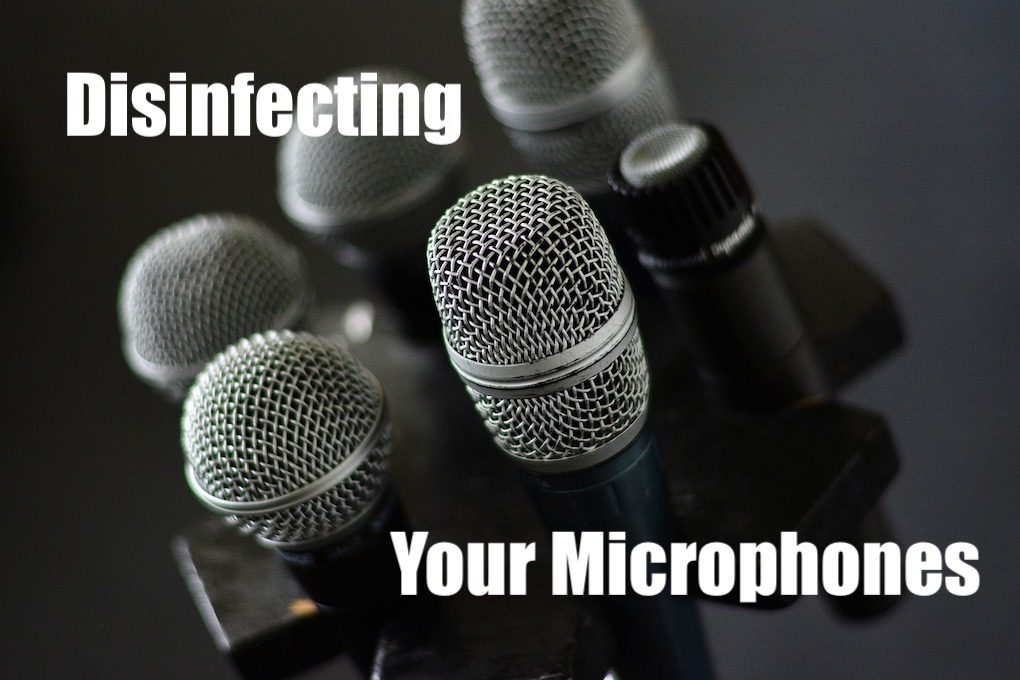- in Production by Bobby Owsinski
A Guide To Disinfecting Your Microphones

We’re gradually all getting back to work, and while it’s great to be busy again, it also means that increased precautions against virus infection are necessary. A new level of studio cleansing is required and that especially includes microphones. DPA has some guidelines for disinfecting your microphones and accessories that I’ve paraphrased and excerpted here. Let’s dig in.
Cleaning vs. Disinfecting
First understand the differences between cleaning and disinfecting. Cleaning means to remove dirt, while disinfecting means killing germs (we want both). Clean first, then disinfect.
DPA suggests that the best way to clean the mic is to wipe down its surfaces with soap and water, which also destroys germs in the process. Take care not to get any on the capsule. Let dry for 72 hours.
Disinfecting
This is basically the same as cleaning except for the solution used. In this case, wipe down the microphone with a cloth moistened with 70% isopropyl alcohol. Be sure you don’t get any on the mic’s capsule.If you go to the drug store you’ll find 99% alcohol and you might think it will work better because it’s stronger. That’s not the case though, since it evaporates too quickly to kill any germs. A diluted solution is actually better at the job. You can still use it though by adding 20% water to it, which will allow it to linger long enough to do its job.
While DPA suggest 80% alcohol, the CDC says that 70% (which is more readily available in stores) is effective in killing coronavirus germs.
Wind Screens
Foam wind screens should be cleaned by gently removing them from the microphone, then cleaning with soap and water. Leave them to dry for 72 hours, which is long enough for any remaining germs to die. Unfortunately you can’t use isopropyl alcohol here as it will damage the foam.
Cables
It’s easy to overlook cleaning cables but they’re things that get touched all the time without even thinking about it. Like foam wind screens, you can’t use alcohol to clean them because it will break down the cable jacket and eventually make them brittle. DPA suggests using olive or coconut oil, which sounds a little too much like lunch to me, but good old fashioned soap and water works as well. Like everything else not exposed to isopropyl alcohol, let dry for 72 hours to be sure they’re germ-free.
DPA also suggests that you can speed up the 72 hour waiting process by placing the gear in an oven set at 140 degrees for an hour. The problem is that microphone capsules might age slightly from doing that, but if you’re in a hurry it may be worth it.
Cleaning and disinfecting your microphones is probably something that they needed, and it’s always a good practice to do so regularly anyway. It’s not difficult and just takes a little time, and it will go a long way to keeping you and your clients healthy. Happy disinfecting!

